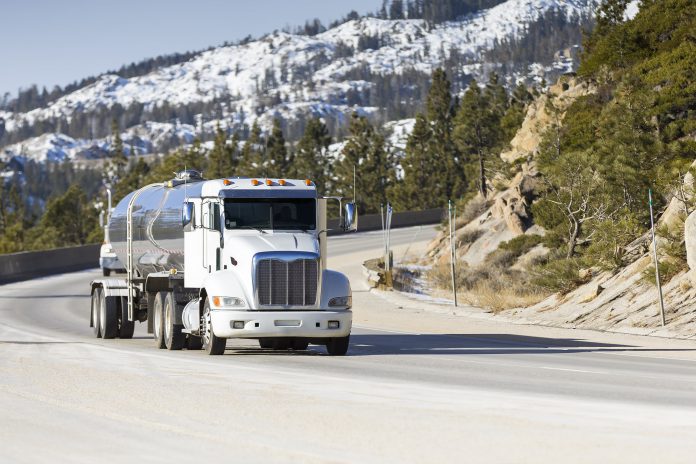Last year was transformational for the trucking industry. Major changes to the way we live, work, and interact with others took place, and the men and women of the trucking industry, who were deemed “essential,” were asked to keep the country moving in the face of unprecedented challenges.
Looking ahead, new regulations and new leaders will continue to require the trucking industry to adapt as our country continues to navigate through the pandemic and transitions to a new presidential administration in 2021.
Now that the new year has officially begun, here is what to expect looking forward.
Department of Transportation
If confirmed, newly nominated Pete Buttiegieg will begin leading as Secretary of the Department of Transportation in 2021. Buttigieg formerly served as Mayor of South Bend, Indiana, before making a brief run for the Democratic nomination for President.
Joe Biden’s transportation plans revolve around launching “a national effort aimed at creating jobs we need to build a modern, sustainable infrastructure now and deliver an equitable clean energy future.”
Before the election, Biden called for a 10-year, $1.3 trillion plan. The plan dedicated $50 billion for fixing highways and bridges, and $5 billion over five years for electric vehicle batteries. The plan would also dedicate $400 billion for research and innovation of clean energy.
“We’ve got to make sure that we get a transportation sector that has been beaten up economically, back on its feet,” said Buttigieg in a statement.
COVID-19
As the pandemic continues to rage across the country, truckers will continue to be asked to mask up, to keep their distance, and could continue to struggle to find a hot meal in some areas as dine-in restaurants remain restricted or closed.
With the rollout of the COVID-19 vaccine still underway, the country will continue to rely on semi truck drivers to deliver the drug throughout 2021. Along with transporting the vaccine to Americans, truck drivers will also be eligible to receive the vaccine this year.
More information on phased allocation of the vaccine can be found — here.
Regulation Changes
Federal rules have restricted third-party CDL instructors from administering skills tests to their students in the past. In an announcement on Dec. 17, that restriction was eliminated, permitting states to allow the instructor to do both the teaching and the testing. The new rule is designed to reduce testing delays during times of driver shortage, create flexibility for the industry, and eliminate inconvenience and expense to the applicants. The change will take effect on Feb. 15 and individual states will have to adjust local rules.
FMSCA also extended its CDL, commercial learning permit (CLP)/Medical Certificates waiver in response to the COVID-19 crisis. This waiver is effective through January 1, 2021 and expires on February 28, 2021 or upon the revocation of the President’s Declaration of National Emergency.
Freight Rates
Freight rates and demand were all over the board in 2020, deviating from normal trends due to the pandemic year. It is expected for freight demand to return to a more predictable pattern in 2021. January and early February are expected to be slow months, with growth in spring and early summer, and then slowing back down at the end of the year.
The trucking freight market could fully recover by the end of 2021 as the industry adjusts to pre-pandemic trends, according to forecasts from FTR Transportation Intelligence, which hosted its final FTR Engage virtual session of 2020 on Dec. 10. Since the driver pool is still limited, capacity could continue to be tight, at least until the COVID-19 vaccine is available on a larger scale.
FTR predicts rates to climb 10% on aggregate, which includes growth in both contract and spot rates.
Fuel Costs
“With demand still significantly lower than historical averages and continued supply to carry through to 2021, prices will continue to remain relatively flat” said Emily Candib, director – fleet products for Merchants Fleet. “Traditional demand expected to pick up in May-June and raise prices along with pressure on refineries to keep pace.”
It is anticipated that 2021 will be a recovery year as more drivers venture back out on the road compared to 2020, which will bring increased demand and will drive prices.
Emission Regulations
With climate policy as a main focus of the new presidential administration, there could be an emphasis on emissions regulations in the coming year.
Biden plans to “Ensure the U.S. achieves a 100% clean energy economy and reaches net-zero emissions no later than 2050.”
The trucking industry has been on its own path towards reducing air and noise pollution through electric truck fleets, and several companies plan to ramp up production in 2021. Of the most notable, Volvo VNR Electric truck will go into production in 2021, and the Tesla semi is expected to enter production and delivery in 2021 as well.
The U.S. Department of Transportation released a strategy on Monday for integrating automated driving systems into the commercial trucking and passenger vehicle sectors. The Automated Vehicles Comprehensive Plan explains the integration of automated vehicles into America’s transportation system. It takes into account concerns about safety, security, and long term impact on the country’s long-haul trucking workforce.
The year ahead will once again require that drivers and motor carriers be quick to adapt to meet the challenges and uncertainties that they will undoubtedly face. In 2020, the men and women of the trucking industry a found a way to keep the country moving through their hard work and determination. In 2021, it’s likely that even more grit will be required to meet the demands of a rapidly changing world.
